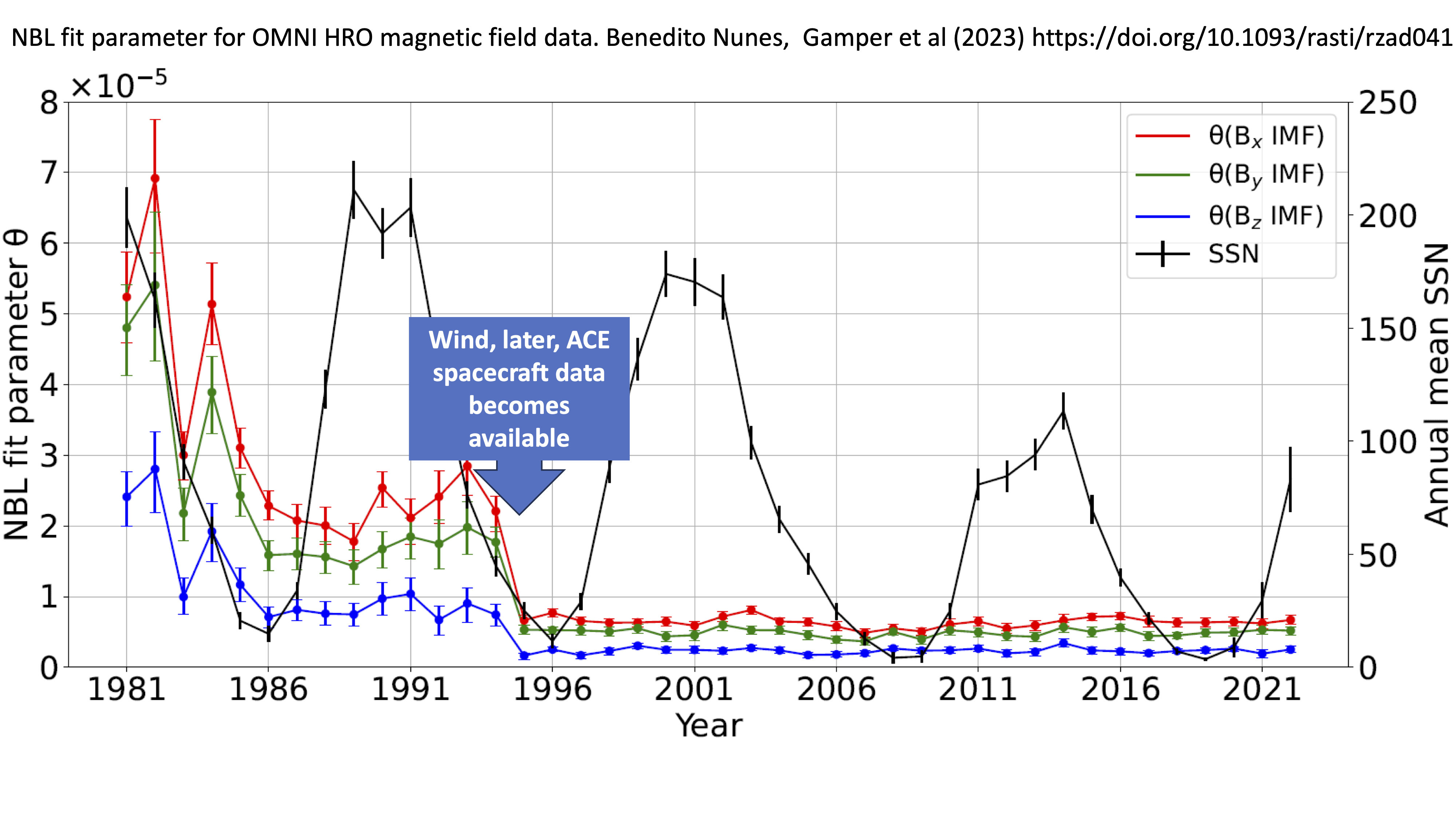MIST
Magnetosphere, Ionosphere and Solar-Terrestrial
Newcomb-Benford Law as a generic flag for changes in the derivation of long-term solar terrestrial physics timeseries
By Sandra Chapman (University of Warwick), A. M. Bendito Nunes (undergraduate student, University of Warwick), and J. Gamper (undergraduate student, University of Warwick)
Space weather can have significant impact over a wide range of technological systems including power grids, aviation, satellites and communications. In common with studies across the geophysical sciences, space weather modelling and prediction requires long term space and ground-based parameters and indices that necessarily aggregate multiple observations, the details of which can change with time. The Newcomb-Benford law (NBL) specifies the relative occurrence rates of the leading digit in a sequence of numbers arising from multiple operations under certain conditions, the first non-zero digit in a number is more likely to be 1 than 2, 2 than 3, and so on. In this first application to space weather parameters and indices, we show that the NBL can detect changes in the instrumentation and calibration underlying long-term geophysical records, solely from the processed data records. In space weather, as in other fields such as climate change, it is critical to be able to verify that any observed secular change is not a result of changes in how the data record is constructed. As composite indices are becoming more widespread across the geosciences, the NBL may provide a generic data flag indicating changes in the constituent raw data, calibration or sampling method.

Figure 1: The plot shows the NBL goodness of fit parameter for magnetic field observed since 1981 by a series of satellites upstream of the earth. The NBL fit parameter shows a clear decrease when more sophisticated satellites, Wind. and later ACE, became available.
The joint 1st authors of this paper contributed to this research during their final year undergraduate Physics project at Warwick University
See paper for full details:
A. M. Benedito Nunes, J. Gamper, S. C. Chapman, M. Friel, J. Gjerloev, Newcomb-Benford Law as a generic flag for changes in the derivation of long-term solar terrestrial physics timeseries, RAS Techniques and Instruments (2023) https://doi.org/10.1093/rasti/rzad041